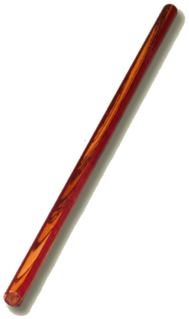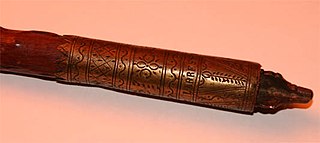 W
WThe baston is one of the primary weapons of Arnis and Filipino martial arts. It is also known as yantok, olisi, palo, pamalo, garrote, caña, cane, arnis stick, eskrima stick or simply, stick.
 W
WA gun is a long Chinese staff weapon used in Chinese martial arts. It is known as one of the four major weapons, along with the qiang (spear), dao (sabre), and the jian. It is called, in this group, "The Grandfather of all Weapons". In Vietnam, the gun is known as Côn in Vietnamese martial arts.
 W
WThe hanbō is a staff used in martial arts. Traditionally, the hanbō was approximately three shaku or about 90 centimetres (35 in) long, half the length of the usual staff, the rokushakubō. Diameter was 2.4 to 3 centimetres. However, depending on the school the length and diameter varied.
 W
WThe makila is a traditional Basque walking stick, and is notable as both a practical tool and a cultural symbol of authority and strength.
 W
WA quarterstaff, also short staff or simply staff is a traditional European pole weapon, which was especially prominent in England during the Early Modern period.
 W
WSinglestick is a martial art that uses a wooden stick as its weapon. It began as a way of training soldiers in the use of backswords. Canne de combat, a French form of stick fighting, is similar to singlestick play, which also includes a self-defense variant with a walking stick.
 W
WThe throwing stick or throwing club is a wooden rod with either a pointed tip or a spearhead attached to one end, intended for use as a weapon. A throwing stick can be either straight or roughly boomerang-shaped, and is much shorter than the javelin. It became obsolete as slings and bows became more prevalent, except on the Australian continent, where the native people continued refining the basic design. Throwing sticks shaped like returning boomerangs are designed to fly straight to a target at long ranges, their surfaces acting as airfoils. When tuned correctly they do not exhibit curved flight, but rather they fly on an extended straight flight path. Straight flight ranges greater than 100 meters have been reported by historical sources as well as in recent research.